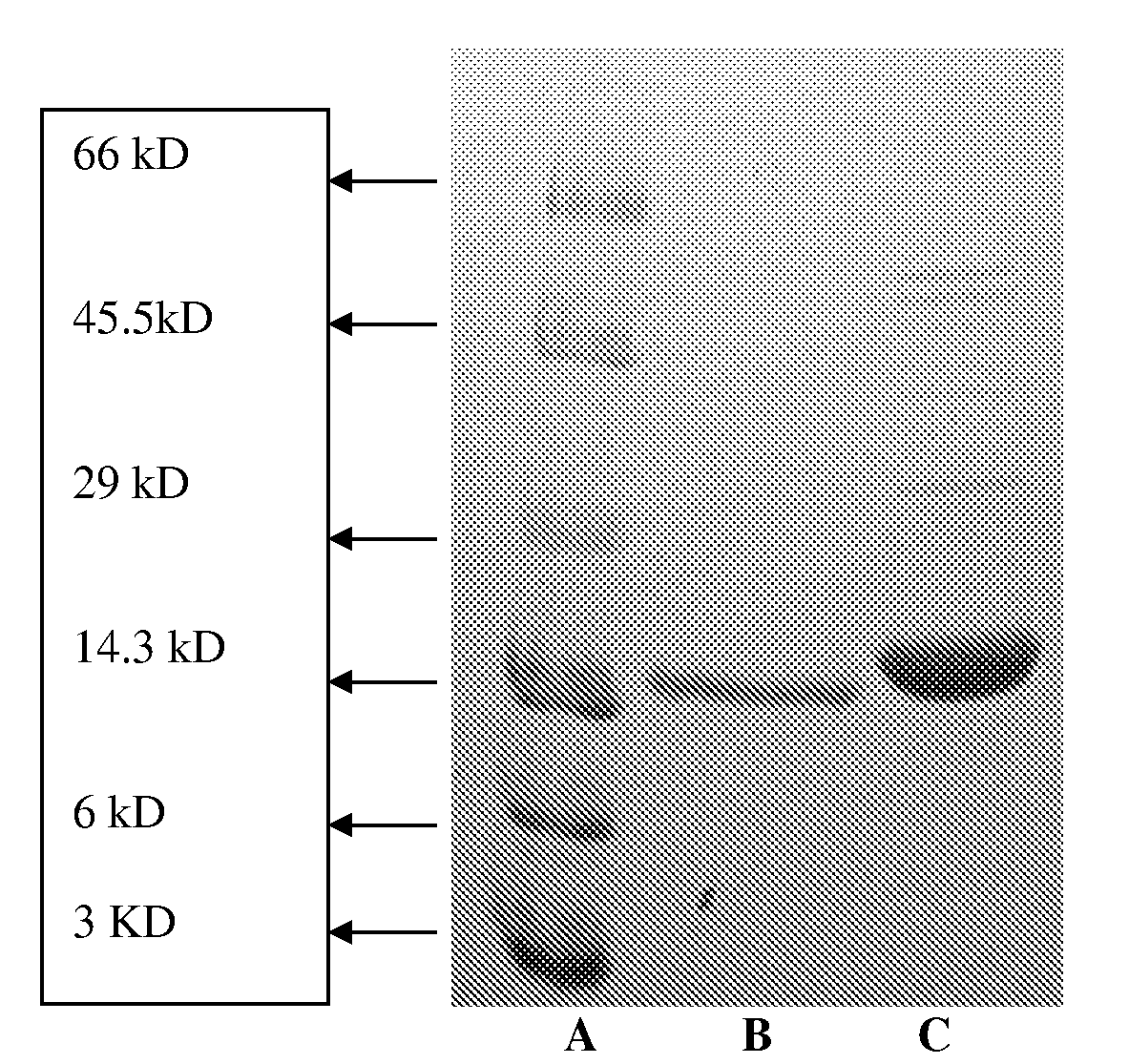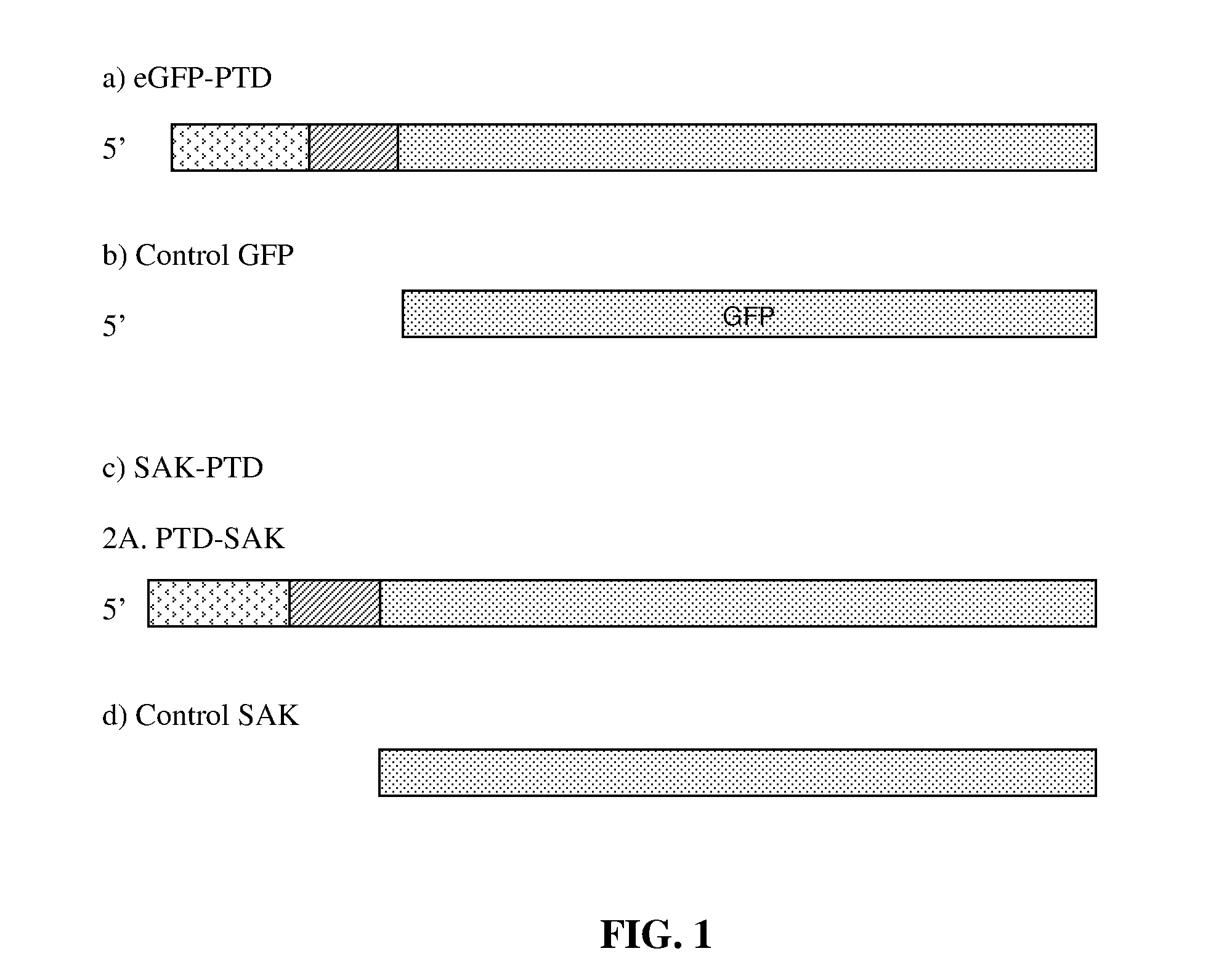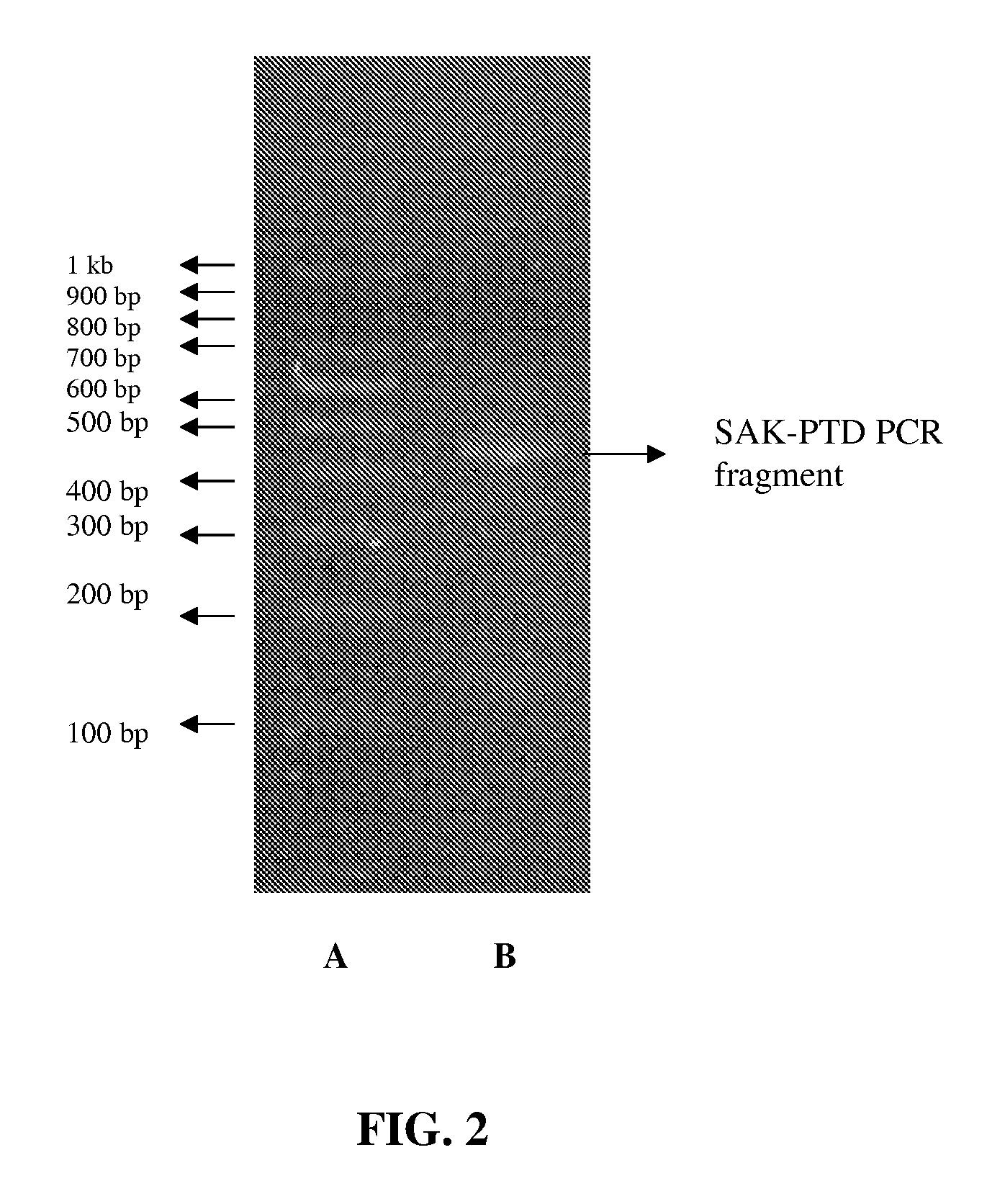Novel thrombolytic molecules and a process therefor
a thrombolytic and molecule technology, applied in the direction of antibody mimetics/scaffolds, biochemistry apparatus and processes, enzymes, etc., can solve the problems of affecting heart and lungs, paralysis, speech difficulties, etc., to improve the uptake of such proteins and dissolve the thrombi
- Summary
- Abstract
- Description
- Claims
- Application Information
AI Technical Summary
Benefits of technology
Problems solved by technology
Method used
Image
Examples
example 1
Design of the Novel Staphylokinase by Addition of a Protein Transduction Domain
[0033]The design includes adding a protein transduction domain (PTD) of 11 amino acid residues to the N-terminus of staphylokinase (SEQ ID NO.1). The PTD domain and staphylokinase are separated by an amino acid linker of the sequence Gly-Gly-Gly-Ser.
[0034]Native staphylokinase molecule without PTD domain was used as a control. eGFP (Green Fluorescent Protein) consisting of PTD domain of similar sequence was used as a positive control in the experiments. The cloning strategy for both the SAK-PTD and eGFP-PTD were similar. The design of SAK-PTD and eGFP-PTD are depicted in FIG. 1.
[0035]The region encoding the 127 amino acid residue of staphylokinase beginning with N-terminal sequence KGDDA is referred to in this invention as staphylokinase or SAK.
[0036]The protein with the added PTD domain at the 5′ end is referred to as SAK-PTD. The protein with added PTD domain at the 5′ end of eGFP is referred to as eGFP...
example 2
Cloning and Recombinant Expression of SAK-PTD and eGFP-PTD
[0037]Staphylokinase gene of SEQ ID NO. 1 cloned in plasmid pET23a was used as a template for the synthesis of SAK-PTD by Polymerase Chain Reaction (PCR). PCR amplification was carried out serially to add 4 amino acid residues of the linker sequence Gly-Gly-Gly-Ser and 11 amino acid residues of the sequence Tyr-Gly-Arg-Lys-Lys-Arg-Arg-Gln-Arg-Arg-Arg (YGRKKRRQRRR) or of the sequence Tyr-Ala-Arg-Ala-Ala-Ala-Arg-Gln-Ala-Arg-Ala (YARAAARQARA) at the 5′ end of the staphylokinase gene to generate SAK-PTD. The PCR amplification was carried out in four steps serially with overlapping primer sets to add a total of 16 amino acid residues including the initiator Met at the 5′ end. An example of the primer sets used for the generation of the final SAK-PTD fragment are:
BTNTFPISAK - 5′ GGTGGTGGTTCGAAAGGCGATGACGCGAGTTATTTTG 3′;BTNTFP2SAK - 5′ CGTCAGGCGCGTGCGGGTGGTGGTTCGAAAG 3′;BTNTFP3 - 5′ GCACGTGCAGCAGCACGTCAGGCGCGTG 3′;BTNTFP4 - 5′ CAATG...
example 3
[0043]Protein Purification: SAK-PTD and GFP-PTD
[0044]SAK-PTD protein expressed in the soluble fraction of the E. coli lysate was dialysed for 12 hours in 10 mM Tris-HCl buffer, pH 8.0 and loaded on a Q-sepharose column equilibrated with the same buffer. After washing the column with the buffer, elution was carried out with 50 mM-250 mM NaCl in the same buffer. SAK-PTD eluted with 70 mM NaCl. The fractions containing the protein were pooled and loaded on a phenyl sepharose column equilibrated with 10 mM Tris-HCl pH 8.0. After washing the column extensively with buffer containing 100 mM NaCl, the protein was eluted in water. eGFP that was expressed in the soluble fraction of the E. coli lysate was purified first on a Q-sepharose column equilibrated with 50 mM Tris-HCl buffer, pH 7.5 and eluted with NaCl in the same buffer at 150 mM. The fractions containing the protein were pooled and were loaded on a phenyl sepharose column equilibrated in 50 mM Tris-HCl buffer, pH 7.5. The column wa...
PUM
| Property | Measurement | Unit |
|---|---|---|
| temperature | aaaaa | aaaaa |
| temperature | aaaaa | aaaaa |
| pH | aaaaa | aaaaa |
Abstract
Description
Claims
Application Information
 Login to View More
Login to View More - R&D
- Intellectual Property
- Life Sciences
- Materials
- Tech Scout
- Unparalleled Data Quality
- Higher Quality Content
- 60% Fewer Hallucinations
Browse by: Latest US Patents, China's latest patents, Technical Efficacy Thesaurus, Application Domain, Technology Topic, Popular Technical Reports.
© 2025 PatSnap. All rights reserved.Legal|Privacy policy|Modern Slavery Act Transparency Statement|Sitemap|About US| Contact US: help@patsnap.com



